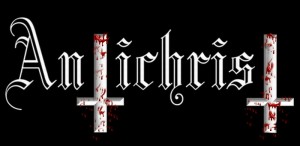Continuing my thoughts from yesterday’s post:
 What are the characteritics that comprise the man of lawlessness, or the one we would commonly refer to as the Anti-Christ?
What are the characteritics that comprise the man of lawlessness, or the one we would commonly refer to as the Anti-Christ?
He Comes with Apostasy
2 Thess 2:3 says, “Let no one in any way deceive you, for it will not come unless the apostasy comes first, and the man of lawlessness is revealed, the son of destruction” (italics in in the NAS).
The apostasy here appears to be something quite definite, not merely a period where some are deliberately abandoning the faith, but a definite time where such abandonment tends to characterize the culture so significantlythat it is “the apostasy.”
The construction of verse 3 gives the indication that the apostasy and the revelation of the man of lawlessness are closely related to one another. While we may live in a climate ripe for apostasy – while Paul no doubt saw examples of apostasy, the apostasy spoken of here is directly connected to the revelation of the man of lawlessness and is a reason Paul gives for why his own era was not connected to the day of the Lord – the day of God’s wrath.
He is Characterized by Disobedience and Destruction
His title is a man of “lawlessness;” he is disobedient to God’s instructions. He refuses to be ruled by God (1 John 3:4). “Son of destruction” is a Hebrew idiom to speak of the chief characteristic of this man: destruction. Not that he merely produces destruction, but I think this really describes his ultimate future. Destruction is his doom. He is the one who will be given over to destruction (Revelation 19:19-20).
He Exalts Himself as God (vv 4-5)
His life is characterized by opposition to God, primarily because his desire is to be exalted as God. In other words, he fulfills the desires Satan had for himself (Isa 14:13; Dan 7:25, 26, 27; 11:31-37; 12:11). He exalts himself to such a degree that he sets himself up within the inner sanctuary of the Jewish temple, displaying himself to be God Himself.
It is this very characteristic that causes some to suggest that this “man of lawlessness” must refer to someone in Paul’s own day, prior to A.D. 70 and the destruction of the temple in Jerusalem. Jesus spoke of this sort of thing as well (Matthew 24:15; cf., Dan 12:11). Virtually all agree that Daniel and Jesus refer to the desolation of the temple by Antiochus Ephiphanes in 167 B.C. as a temporal illustration of what would one day be more fully manifest (see 1 Maccabees 1:10, 20-24, 29-32, 37, 45-48, 59-64). Clearly by Jesus’ and Paul’s reference, Antiochus was not the fulfillment, but an example.
In A.D. 40, Gaius (Caligula) also set up his statue in the Jerusalem temple and asserted to be deity. Other Roman emperors have similar stories. But they were not the fulfillment of Paul’s words – more likely, examples of what John referred to when he predicted the coming of many antichrists (1 John 2:18). By linking the man of lawlessness with the appearing of Jesus Christ (2 Thess 2:8), Paul believed this man to be eschatological and final; one who would be personally destroyed by Jesus when he returned triumphantly to earth.
He is Currently Restrained (vv 6-7)
Paul indicated that this man of lawlessness is “now” restrained (cp. all the timing terminology in this passage: “in his time” v 6, “already,” v 7, “until,” v 7, “then,” v 8). The reason for the restraint is given also “so that in his time he may be revealed.” Meaning, the restraining keeps back his being revealed until “his time.” Interestingly, a neuter term is used to speak of his restraining in verse 6: “what restrains him now.” In verse 7 the masculine is used: “he who restrains.” Consider that the man of lawlessness can deceive the entire world into thinking he is a manifestation of the Hebrew God, he does so with miracles, signs, and wonders, and all of his abilities and energies are derived from the supernatural work of Satan.
So, whatever, or whoever is restraining him right now must not be merely earthly. The restrainer is not likely to be a human government such as the Roman government of Paul’s day. Rome did not restrain evil – it promoted it. Furthermore, Christ did not physically appear and destroy it. While it may be conjecture, I have no problem believing that the one restraining is the Spirit of God. How and when His restraint is removed, I can’t be dogmatic. Perhaps there will be some shift in the role of the Holy Spirit at this time when the man of lawlessness is revealed, that allows an expansion of evil across the planet that is unprecedented (Matt 24:21).
More tomorrow.








Really enjoying these posts, Bret. I've been involved in a Precepts study on Revelation & this is all very helpful. God bless you for your faithfulness to Him.